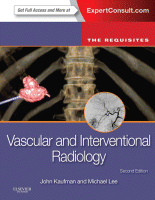Physical Address
304 North Cardinal St.
Dorchester Center, MA 02124

Treatment of primary or metastatic hepatic tumors includes surgical resection, hepatic transplantation (for hepatocellular carcinoma), systemic drug therapy, and transarterial chemo and radioembolic therapy. Limited disease may be amenable to surgical resection. However, only 10%-20% of patients with primary hepatocellular…

Lung cancer is the leading cause of death in both men and women in the United States. It accounts for approximately 32% of deaths in males and 25% in females. Most patients with primary and secondary lung malignancies are nonsurgical…

Before the advent of tumor ablation, the curative treatment for primary renal cell cancer (RCC) was to perform laparoscopic or open nephrectomy or partial nephrectomy. Many patients are deemed unsuitable for potentially curative surgical techniques because of limited renal functional…

Tumor ablation techniques and applications have received increasing attention, research and experience over the past decade and have become an integral component of the treatment plans of some oncology patients. As techniques of application have become increasingly sophisticated, the patient…

Musculoskeletal interventional procedures are a fast growing area for interventional radiology. The most commonly performed techniques and the most promising new techniques are described in this chapter. Image Guidance Percutaneous musculoskeletal interventions, like other interventional procedures, are usually performed with…

Breast cancer is the most common non–skin cancer in women in the developed world, with one in eight women expected to develop breast cancer in their lifetime. However, the vast majority of women presenting to breast clinics have benign disease.…

Although the first percutaneous genitourinary procedure was a renal cyst puncture reported in 1867, it wasn’t until approximately 100 years later that the first percutaneous nephrostomy using the Seldinger technique was described. Since then, percutaneous access to the kidney has…

Gallbladder intervention in the form of gallbladder decompression was first proposed as a definite technique in the second half of the last century. However, percutaneous gallbladder intervention did not gain widespread acceptance because of the fear of bile leakage and…

Percutaneous transhepatic cholangiography (PTC) and percutaneous biliary drainage (PBD) techniques gained widespread popularity in the late 1970s and early 1980s after they were first described. However, the use of both PTC and PBD has declined with the development of diagnostic…

The role of the radiologist in gastrointestinal tract intervention has mushroomed with the advent of percutaneous gastrostomy and more recently esophageal and colorectal stenting. These new procedures, coupled with the older procedures of gastrointestinal stricture dilatation, have made gastrointestinal tract…